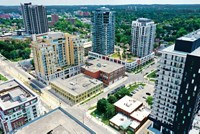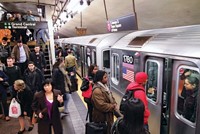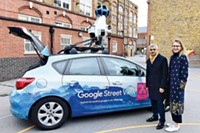Advertisement
Grab your lab coat. Let's get started
Welcome!
Welcome!
Create an account below to get 6 C&EN articles per month, receive newsletters and more - all free.
It seems this is your first time logging in online. Please enter the following information to continue.
As an ACS member you automatically get access to this site. All we need is few more details to create your reading experience.
Not you? Sign in with a different account.
Not you? Sign in with a different account.
ERROR 1
ERROR 1
ERROR 2
ERROR 2
ERROR 2
ERROR 2
ERROR 2
Password and Confirm password must match.
If you have an ACS member number, please enter it here so we can link this account to your membership. (optional)
ERROR 2
ACS values your privacy. By submitting your information, you are gaining access to C&EN and subscribing to our weekly newsletter. We use the information you provide to make your reading experience better, and we will never sell your data to third party members.
Education
Newscripts
Going Postal Over Structural Errors, Kids Aren’t Clowning
by Marc S. Reisch
April 7, 2008
| A version of this story appeared in
Volume 86, Issue 14
CLICKER TECHNOLOGY
A number of readers have buzzed Newscripts over an item about Edinburgh University's plan to give every student a handset that allows professors to pose multiple-choice questions to up to 400 students at a time. The system allows students to beam their answers via the remote units and it quickly calculates the percentage of correct answers.
"And this is news?" penned one professor of chemistry. "The University of Tennessee and many other U.S. colleges and even K-12 schools are using a radio-frequency 'clicker' system that greatly outperforms the system described."
Another reader was a bit more diplomatic, writing, "Just to let you know that many of us in the U.S. educational community are pleased that the Scots are catching up with us."
One avid reader from Quinnipiac University in Hamden, Conn., makes a point to which this writer readily concedes: "It is obvious to me that the author of Newscripts in the issue of Feb. 25 has NOT attended any recent conferences on chemical education."
"ICUC," says the Quinnipiac reader, "has had many seminars on CLICKER TECHNOLOGY in recent years." Intrigued, Newscripts made a bee-line for the Internet and Googled ICUC. The International Centre for Underutilised Crops is what came up first. Clearly that wasn't right, and a quick consult with the Quinnipiac letter writer pointed Newscripts to the International Center for First-Year Undergraduate Chemistry Education, the intended ICUC.
Paul Kelter, professor of education, chemistry, and biochemistry at Northern Illinois University, DeKalb, and an ICUC board member, says the group started more than four years ago with 22 educators as members sharing an interest in first-year chemistry. The clique now has 200 members committed to buzzing freshman chemistry students out of their torpor.
CARBON TAX

This ought to shake at least some motorists out of their environmental lethargy. Beginning in October, London plans to impose a CARBON TAX on drivers bringing their cars into the city during peak congestion hours. Drivers of gas-guzzling pickup trucks and sport utility vehicles may want to consider other modes of transportation through the U.K.'s capital.
Tackling global warming is a key priority for Mayor Ken Livingstone. Therefore, vehicles emitting more than 225 g of carbon dioxide per km of city driving according to registration documents will pay a daily charge of about $50 to enter the "congestion zone." That's on top of the $16 toll London drivers have paid since 2003 to get in the zone.
Vehicles with the lowest emissions, less then 120 g/km, will get a pass. Flexible pricing depending on a vehicle's emissions will mean that 17% of cars currently coming into the zone would pay the highest charge. Only 2% of vehicles would qualify for the total discount.
Two-thirds of cars now coming into the city will likely stay away, figures the London traffic agency now responsible for regulating the congestion pricing scheme. The agency is encouraging would-be drivers to use trains, buses, and bicycles. For a truly unique experience, it suggests walking.
PIPETTES
Moving from carbon dioxide emissions into the atmosphere to chemical measurements in liquids, liquid-handling specialist Artel says that PIPETTES perform accurately and precisely in the humid conditions of the Olympic National Park west of Seattle, where there will be absolutely no Olympic competition this summer.
Artel released these findings from its fourth Extreme Pipetting Expedition at the recent Pittcon meeting in New Orleans.
The low evaporation potential of a humid environment at 14 °C at Olympic Park did the trick. To ensure data integrity, "laboratory managers should consider if their facilities have conditions similar to Olympic Park with 74% relative humidity," says George Rodrigues, Artel senior scientific manager.
This week's column was written by Marc S. Reisch. Please send comments and suggestions to newscripts@acs.org.






Join the conversation
Contact the reporter
Submit a Letter to the Editor for publication
Engage with us on Twitter